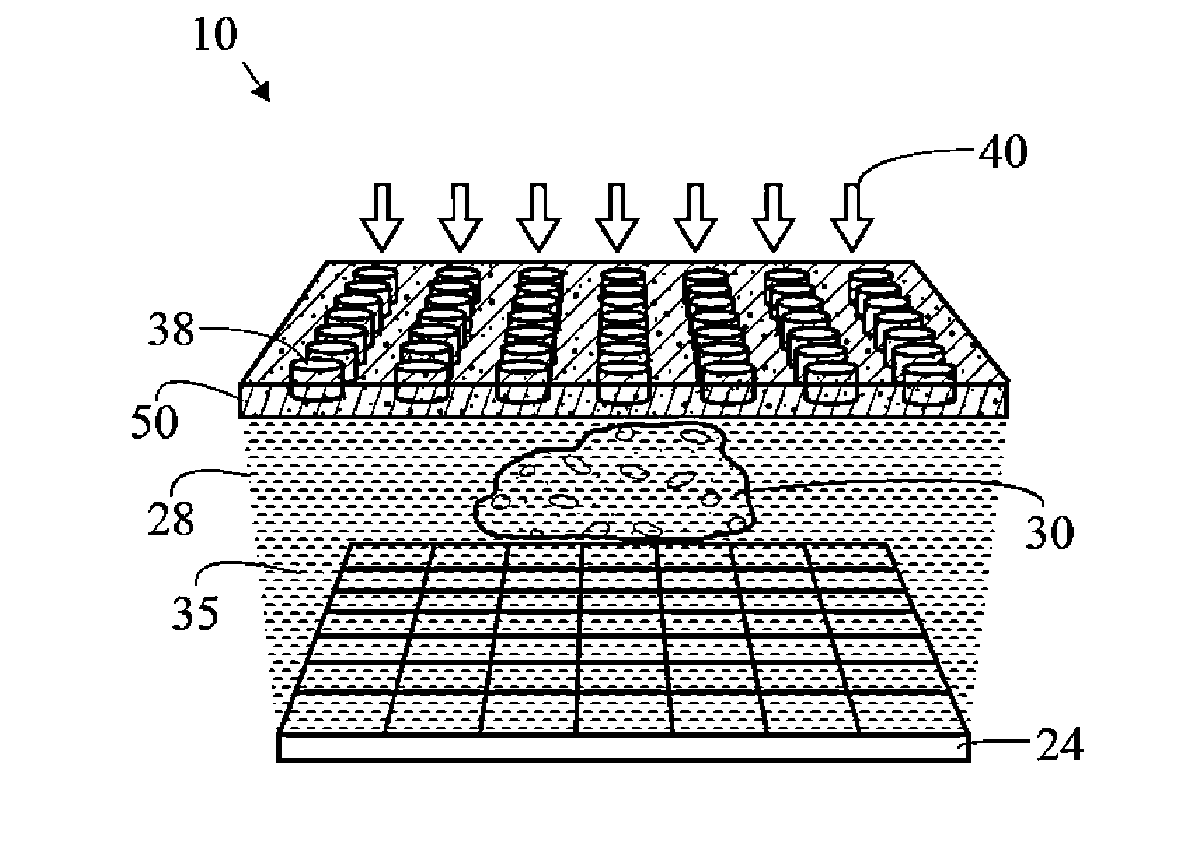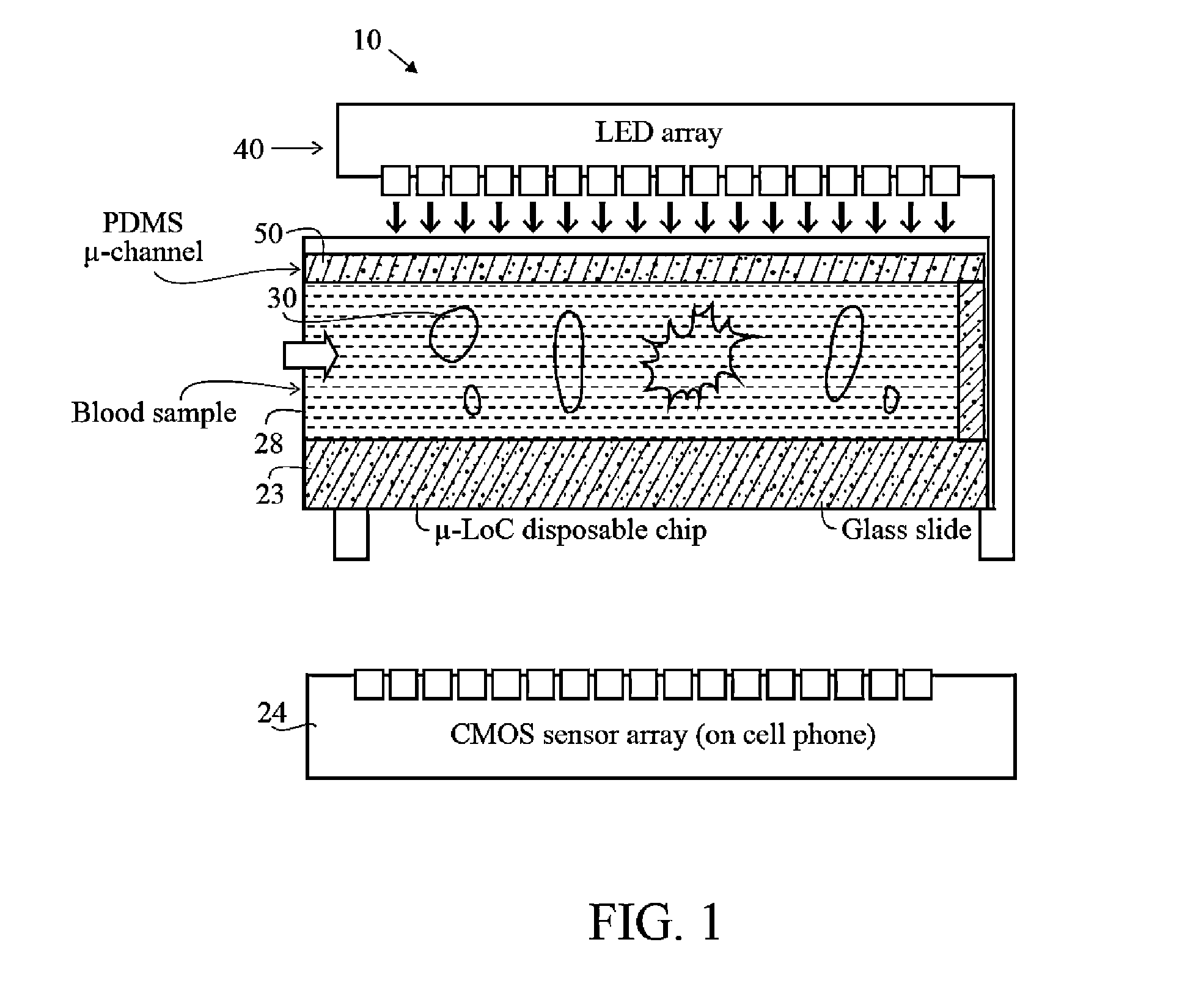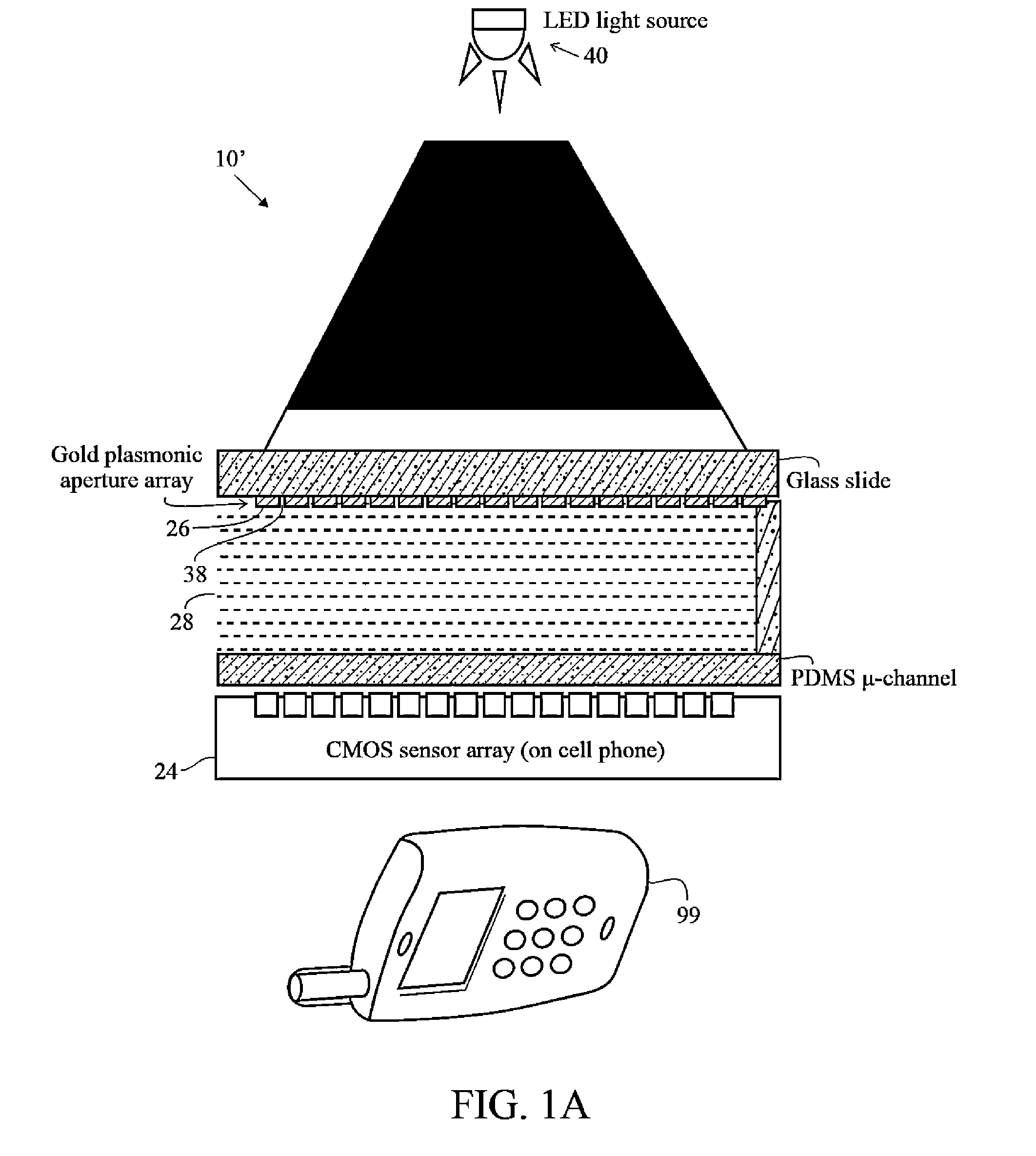On-chip 4d lightfield microscope
a microscope and light field technology, applied in the field of on-chip lensless microscope systems, to achieve the effect of greater automation of microscope operation
- Summary
- Abstract
- Description
- Claims
- Application Information
AI Technical Summary
Benefits of technology
Problems solved by technology
Method used
Image
Examples
Embodiment Construction
[0042]The present invention extends on-chip lensless microscope systems, including optofluidic microscope (OFMs) and holographic imaging microscopes to incorporate computational photography principles. This provides a three-dimensional imaging system for improved visualization and increased throughput. Optofluidic microscope and holographic imaging microscopes are described in greater detail in: 1) X. Q. Cui, L. M. Lee, X. Heng, W. W. Zhong, P. W. Sternberg, D. Psaltis, and C. H. Yang, Proc. Natl. Acad. Sci. U.S.A., 2008, 105, 10670-10675, 2) X. Heng, D. Erickson, L. R. Baugh, Z. Yagoob, P. W. Sternberg, D. Psaltis and C. H. Yang, Lab Chip, 2006, 6, 1274-1276, and 3) Seo, S., Su, T.-W., Tseng, D. K., Erlinger, A. and Ozcan, A., Lab Chip, 2009, 9, 777-787, all three of which are hereby incorporated by reference in its entirety.
[0043]The OFM method preferably utilizes simplified microfluidic flow to transport biological samples across a linear array of small apertures on a metal coate...
PUM
 Login to View More
Login to View More Abstract
Description
Claims
Application Information
 Login to View More
Login to View More - R&D
- Intellectual Property
- Life Sciences
- Materials
- Tech Scout
- Unparalleled Data Quality
- Higher Quality Content
- 60% Fewer Hallucinations
Browse by: Latest US Patents, China's latest patents, Technical Efficacy Thesaurus, Application Domain, Technology Topic, Popular Technical Reports.
© 2025 PatSnap. All rights reserved.Legal|Privacy policy|Modern Slavery Act Transparency Statement|Sitemap|About US| Contact US: help@patsnap.com



